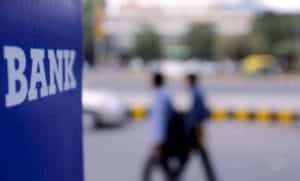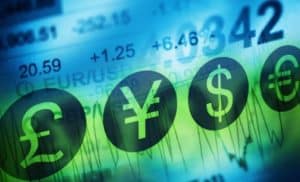Table of Contents
The Indian Economy Set to Grow at 6.5% in the Current Fiscal Year, Says NITI Aayog Member
The Indian economy is projected to grow at around 6.5% in the current fiscal year, according to Arvind Virmani, a member of NITI Aayog. This growth is expected despite challenges such as high crude oil prices and increased uncertainty due to climate change. Mr. Virmani highlights the consistent increase in gross household savings in India as a positive indicator.
Significance
The projected growth of the Indian economy is significant as it indicates stability and resilience in the face of external challenges. It demonstrates the ability of the Indian economy to navigate through global fluctuations and maintain a reasonable growth rate. The increase in gross household savings also reflects the financial consciousness and saving habits of Indian households.
Features
According to Mr. Virmani, the fluctuations in global GDP have more or less balanced out for India, assuming normal changes. This suggests that India’s growth projection of 6.5% has been calculated by taking into account global economic fluctuations. He also emphasizes the importance of understanding how GDP is constructed to avoid misunderstandings and claims of inflated economic growth.
Objectives
The objective of projecting a 6.5% GDP growth rate is to provide a realistic outlook for the Indian economy in the current fiscal year. This projection serves as a guide for policymakers, businesses, and individuals to make informed decisions based on the expected economic growth. It also reassures investors and international agencies about India’s economic potential.
Effects
The projected GDP growth rate of 6.5% has several effects on different aspects of the economy. It instills confidence in businesses, leading to increased investments and expansion plans. It also creates job opportunities and promotes consumer spending, contributing to overall economic growth. Additionally, the increase in gross household savings reflects a healthier financial position for households, providing a cushion against unforeseen expenses.
Pros and Cons
The projected GDP growth rate of 6.5% has several pros, including economic stability, job creation, and increased investments. It indicates that the Indian economy is resilient and can withstand external challenges. However, there may be cons associated with high inflation due to rising crude oil prices. Inflation can impact the purchasing power of consumers, leading to decreased discretionary spending and potential economic slowdown.
Fun Fact
A fun fact related to the Indian economy is that it is the world’s sixth-largest economy by nominal GDP and the third-largest by purchasing power parity. India has made significant progress in recent years, becoming a major player in global trade and investment.
In conclusion, the projected GDP growth rate of 6.5% for the current fiscal year demonstrates the resilience and stability of the Indian economy. It highlights the increase in gross household savings and reaffirms India’s economic potential. However, challenges such as high crude oil prices and inflation should be effectively managed to ensure sustained economic growth.
Mutiple Choice Questions
1. According to NITI Aayog member Arvind Virmani, what is the projected GDP growth for the Indian economy in the current fiscal year?
a) 6.5% plus minus 0.5%
b) 7.2%
c) 9.1%
d) 6.83%
Explanation: Arvind Virmani projected that the GDP growth for the Indian economy in the current fiscal year is 6.5% plus minus 0.5%.
2. Which factor presents a risk for India’s economy, according to Arvind Virmani?
a) Climate change
b) Consumer debt
c) Crude oil prices
d) Falling household savings
Explanation: Arvind Virmani mentioned that the risk for India’s economy is crude oil prices, as they have increased in recent years.
3. How did the Finance Ministry respond to the criticism of inflated GDP?
a) By dismissing the criticism and stating that income side estimates were used
b) By acknowledging the criticism and promising to revise their GDP calculations
c) By ignoring the criticism and refusing to provide any explanation
d) By blaming international agencies for the inflated GDP figures
Explanation: The Finance Ministry dismissed the criticism of inflated GDP by stating that they have followed the consistent practice of using income side estimates to compute economic growth. They also highlighted that many international agencies have revised upwards their forecast after seeing the first quarter data.
4. According to Arvind Virmani, why is the net household savings ratio in India falling?
a) Increased debt-to-GDP ratio
b) Decreased gross household savings
c) Falling consumer debt
d) Rise in crude oil prices
Explanation: Arvind Virmani explained that the net household savings ratio in India is falling because consumer debt is increasing faster, but the gross household savings ratio has consistently gone up.
5. How has the rise in crude oil prices impacted inflation, according to Arvind Virmani?
a) It has led to a decrease in inflation
b) It has had no impact on inflation
c) It has caused inflation to increase
d) It has stabilized inflation at a moderate level
Explanation: Arvind Virmani stated that the rise in crude oil prices will have some inflationary impact, as the income of the people goes down. However, he also mentioned that the government has managed food inflation reasonably well.
6. How did former Chief Economic Advisor Arvind Subramanian argue that India’s GDP should be measured?
a) From the expenditure side
b) From the productivity side
c) From the income side
d) From the savings side
Explanation: Arvind Subramanian argued that India’s GDP should be measured from the expenditure side rather than the productivity side.
7. How did Chief Economic Advisor V Anantha Nageswaran respond to criticism of “statistical discrepancy” in the first quarter GDP data?
a) He acknowledged the discrepancy and promised to address it
b) He dismissed the criticism and referred to past data
c) He blamed the statistical authority for the discrepancy
d) He called for a revision in the methodology of calculating GDP
Explanation: Chief Economic Advisor V Anantha Nageswaran rejected criticism of “statistical discrepancy” in the first quarter GDP data by referring to past data. He stated that when the same statistical authority reported the severest contraction in the first quarter of 2020, the naysayers had called it credible as it suited their narrative.
Brief Summary | UPSC – IAS
The Indian economy is expected to grow at around 6.5% in the current fiscal year, despite challenges such as high crude oil prices and increased uncertainty due to climate change, according to NITI Aayog member Arvind Virmani. He stated that fluctuations in global GDP have balanced out for India. Virmani dismissed claims by US-based economists that India is overstating economic growth, arguing that they lack an understanding of how GDP is constructed. The Finance Ministry also defended the country’s GDP data, highlighting other indicators such as purchasing managers’ indices and bank credit growth. High crude oil prices and climate change were highlighted as risks. Gross household savings in India have consistently increased, although net household savings have fallen due to rising consumer debt. Virmani noted that India’s debt-to-GDP ratio is low compared to other countries and said the government has managed food inflation reasonably well.

